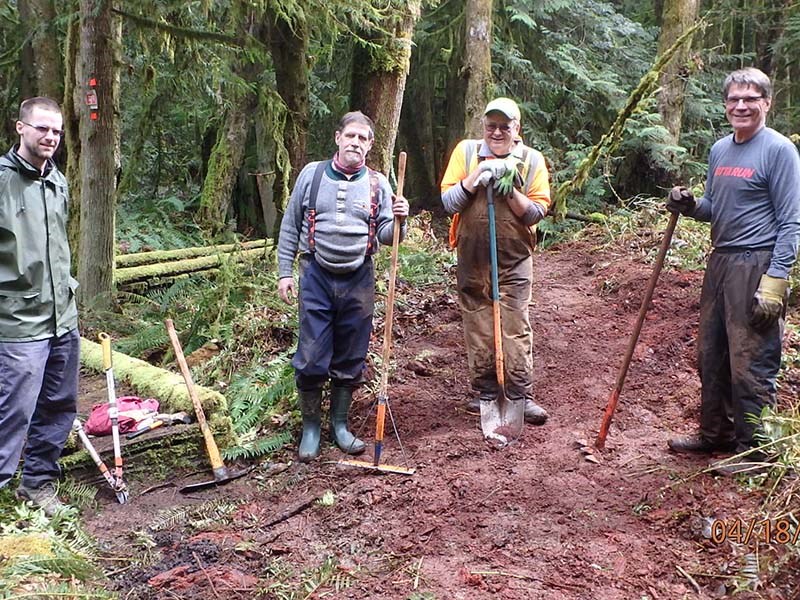Sunshine Coast Trail’s Marathon Shuffle and Half Shuffle event marks its 25th anniversary in 2018. Time has passed quickly, according to Powell River Parks and Wilderness Society (PRPAWS) president Eagle Walz.
“It has gone really fast,” he said, noting the event has become more popular each year.
The first Marathon Shuffle in 1993 was held to bring awareness to the community of all the work being accomplished, said Walz.
“We wanted to highlight the existence of the trail we were building,” he added. “We needed to get people out there and seeing what beautiful places we had.”
Those first few shuffles had just a handful of people in attendance, said Walz.
“To begin with, we might have had between half a dozen to a dozen people,” he added. “It grew slowly in the first few years. Last year it really took off and we had to cap it at 400.”
Walz said having that many runners and hikers sharing the trails at the same time simply was not sustainable. In response, this year the two races will take place on different days.
“It was too congested on the road and trail,” he said. “We had reached a saturation point with that many people on the trail at the same time.”
By splitting the two events, the congestion issue was solved in a way that ensures the group will not need to turn away participants.
“We ended up with a solution where we can still increase our numbers,” said Walz.
The half and full shuffles will now allow 350 outdoor enthusiasts each day for a total of 700. The length of the half shuffle was also decreased this year to accommodate more age groups, according to Walz.
“The half shuffle is about eight kilometres this year and more family friendly,” he said.
The half shuffle will take place on Saturday, April 28, on a different section of the trail, starting at Haywire Bay and ending at the Shinglemill. The full 29-kilometre marathon shuffle is scheduled for the following day and will use the traditional route from Malaspina Road to the Shinglemill.
Both events continue to have no entry fee, but donations are encouraged. This year’s half shuffle is being sponsored by Tla’amin Nation’s 2021 Tribal Canoe Journey group with all donations going toward that initiative.
“Hopefully we’ll raise awareness for tribal journeys and raise funds towards that event, which is happening in 2021,” said volunteer Anne Paul.
Paul is a Tla’amin Nation member and part of one of the canoe families who will take part in the gathering that could bring as many as 100 canoes and 10,000 visitors to Powell River in August of that year.
Participating canoe families have previously volunteered with the shuffle and are receiving support from PRPAWS with the half shuffle this first year.
“They’re helping us tremendously still; it’s a collaboration,” said Paul.
In future the group hopes to assume full responsibility for the half shuffle, which may involve changing the current length of the race, she said.
“We hope to expand the length of the half marathon to 12 kilometres from what it is now,” said Paul.
As momentum builds for the upcoming races, Walz said he reflects on the legacy and future of Canada’s longest hut-to-hut hiking trail.
“The people who conceived of the trail and worked on it for 26 years have put in tens of thousands of hours,” he said. “They have appreciated the support and the respect of the community towards the trail.”
Walz said he sees the future of the trail as a source of pride and enjoyment for locals, as well as an attraction for people from around the world, which will continue to establish tourism in the region.
Part of what sets the trail apart, said Walz, is that it is a single-use hiking trail.
“Multi-use trails are a dime a dozen,” he said. “It is rare where you can have an experience in solitude and feeling close to nature without having machinery of one sort or another, without technology.”



